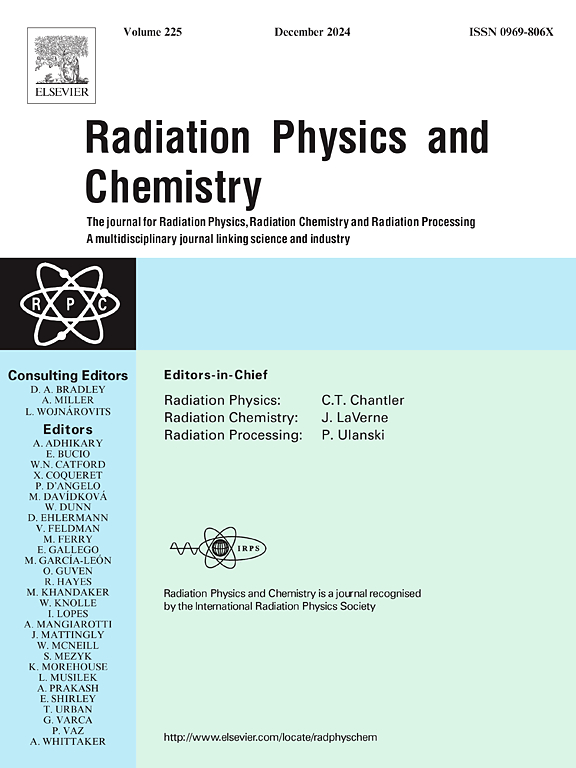Vibrational spectroscopy of Breast Tumor Phantoms: A novel approach to radiation dose estimation
IF 2.8
3区 物理与天体物理
Q3 CHEMISTRY, PHYSICAL
引用次数: 0
Abstract
Purpose
This study aims to develop a simulated breast tumor model with the main objective of analyzing and designing treatment dosage delivery inside the malignant tissue and its nearby areas. Vibrational spectroscopy was employed to provide assistance in this measurement.
Materials and method
Using Fourier transform infrared (FTIR) study results, we confirmed that the phantom materials closely matched actual tumor tissues, with ingredients such as vegetable oil representing fats and lipids while gelatin simulating protein supplies. The presence of sodium chloride (NaCl) was implemented to augment conductivity.
Results
Characterization techniques confirmed the phantom's equivalence to real tumor tissues. X-ray diffraction (XRD) investigation revealed a strong peak indicating a highly crystalline structure, which was attributed to NaCl. Swelling and degradation experiments were used to validate water content equivalence and assess the phantom's durability. FTIR analysis indicated that ester bonds ruptured in the phantom during a 40 Gy radiation dosage, resembling alterations seen in breast tumor cell membranes after radiation exposure.
Conclusion
This phantom proves to be a valuable tool for evaluating cancer treatment strategies. The penetration of radiation in the breast cancer phantom will allow us to explore the effects of radiation on target cells. It will additionally help us in optimizing the radiation dose for breast cancer.
求助全文
约1分钟内获得全文
求助全文
来源期刊

Radiation Physics and Chemistry
化学-核科学技术
CiteScore
5.60
自引率
17.20%
发文量
574
审稿时长
12 weeks
期刊介绍:
Radiation Physics and Chemistry is a multidisciplinary journal that provides a medium for publication of substantial and original papers, reviews, and short communications which focus on research and developments involving ionizing radiation in radiation physics, radiation chemistry and radiation processing.
The journal aims to publish papers with significance to an international audience, containing substantial novelty and scientific impact. The Editors reserve the rights to reject, with or without external review, papers that do not meet these criteria. This could include papers that are very similar to previous publications, only with changed target substrates, employed materials, analyzed sites and experimental methods, report results without presenting new insights and/or hypothesis testing, or do not focus on the radiation effects.
 求助内容:
求助内容: 应助结果提醒方式:
应助结果提醒方式:


